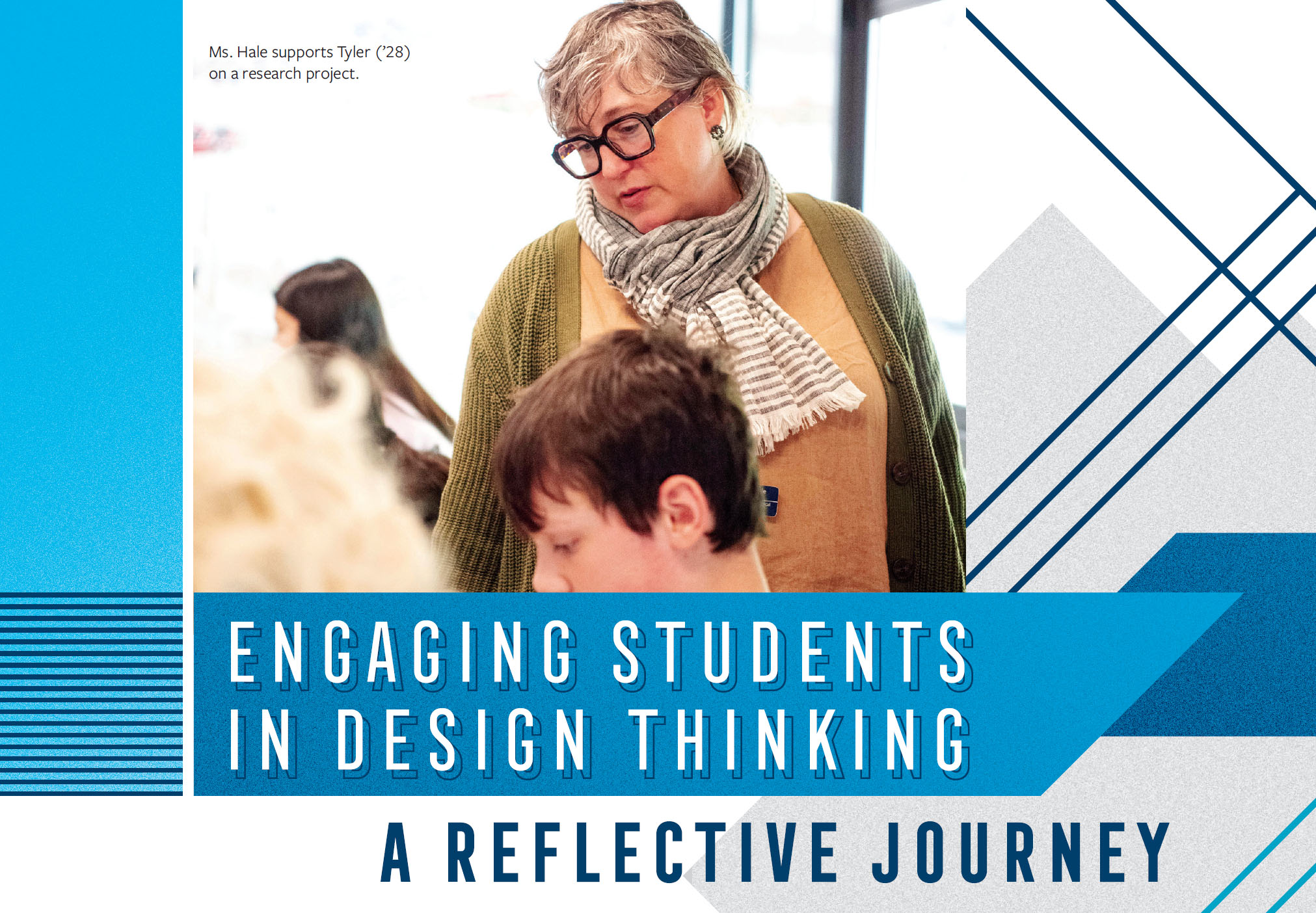
By Alicia Hale, Historical and Literary Thinking Faculty
Design Thinking stands as one of the most pivotal concepts we can instill in our students. By immersing themselves in the design process, students not only gain the ability to empathize with potential users but also learn to define problems and generate creative solutions. In the context of the seventh-grade Historical Thinking class, it marked a compelling venture into the realm of design thinking with the integration of two new Microsoft products: Search Coach and Search Progress.
In October 2022, Jonathan Briggs invited Microsoft developers to campus and they embarked on an insightful journey by observing our students as they interacted with these new tools. Witnessing the student’s initial encounters with Search Coach and receiving their valuable feedback created a unique instance of real-time collaboration and communication between users and developers. This interaction allowed the developers to witness firsthand how students embraced a novel tool, while the students, in turn, felt empowered to express their thoughts on an instrument that could potentially shape their classroom experiences.
Throughout the academic year, Search Coach emerged as a valuable companion for students engaged in research across various projects. After each usage, the class engaged in a reflective process, evaluating the tool’s efficacy and identifying areas for improvement. This introspection not only helped them dissect their learning approaches but also facilitated the acknowledgment of strengths and the contemplation of weaknesses within Search Coach itself. Students exhibited remarkable thoughtfulness in their engagement and were able to critically assess the tool’s role in their learning journey.
Amid moments of frustration when Search Coach encountered limitations, students found an opportunity to voice their concerns and suggest enhancements. These reflective instances served as pivotal checkpoints, enhancing their awareness of their cognitive processes and creating a repository of adaptive strategies for future online research endeavors. The depth of their engagement surpassed ordinary expectations, reflecting a level of metacognition rarely demanded of middle school students. This willingness to delve into the intricacies of problem-solving showcases their commitment to both the process and its potential outcomes.
A remarkable turning point arrived with the introduction of Search Progress during a hackathon later in the year. This extension of Search Coach facilitated the development of an annotated bibliography, seamlessly integrated with the research process. The symbiotic relationship between these tools provided scaffolding for metacognitive behaviors crucial to successful research endeavors. Teaching students to assess online sources is an intricate endeavor often fraught with complexities. Search Progress addressed this challenge by affording students a tangible framework to refine their source evaluation skills.
Though the integration of Search Progress was delayed until the final weeks of the school year, its impact was immediate. Students, unleashed upon the tool, swiftly identified its intricacies and limitations that hindered seamless completion of assignments. The influx of feedback was substantial, underscoring the tool’s significance and the need for a systematic approach to its assessment. Recognizing this, I sought the expertise of Emma Gray, the product manager, to engage with the students and glean insights from their experiences.
Emma’s involvement had already proven influential, as she had fostered a supportive atmosphere for student feedback on Search Coach. Her presence during classroom discussions enabled students to articulate their critiques, frustrations, and suggestions directly. This immersive dialogue revealed a newfound dimension of authentic participation in the design process. The students’ ability to influence the refinement of a tool highlighted the significance of their voices in shaping technological solutions. Emma’s receptiveness and pointed inquiries guided students to articulate their thoughts clearly, facilitating a productive dialogue on improvement.
Notably, EPS students’ innate digital acumen rendered them ideal candidates for testing and refining such tools. By involving students in the evaluation of novel tools, we not only expand their horizons but also stimulate innovative thinking. Encouraging students to contemplate tool utilization paves the way for unprecedented approaches to problem-solving. A pivotal moment emerged when an email arrived from Emma after the academic year’s culmination, bearing news that student feedback had directly contributed to refining the tool. In particular, the irksome issue of non-scrolling assignment buttons in Search Progress had been rectified. This transformation illustrated the tangible influence students can wield when their insights are valued and integrated into the development process.
Witnessing this evolution has been both inspiring and enlightening. EPS students have illuminated the path toward engaging design thinking, demonstrating that young minds possess the potential to shape and enhance the tools that shape their educational journey. Their journey stands as a testament to the power of collaboration, reflection, and innovation within the realm of education.

